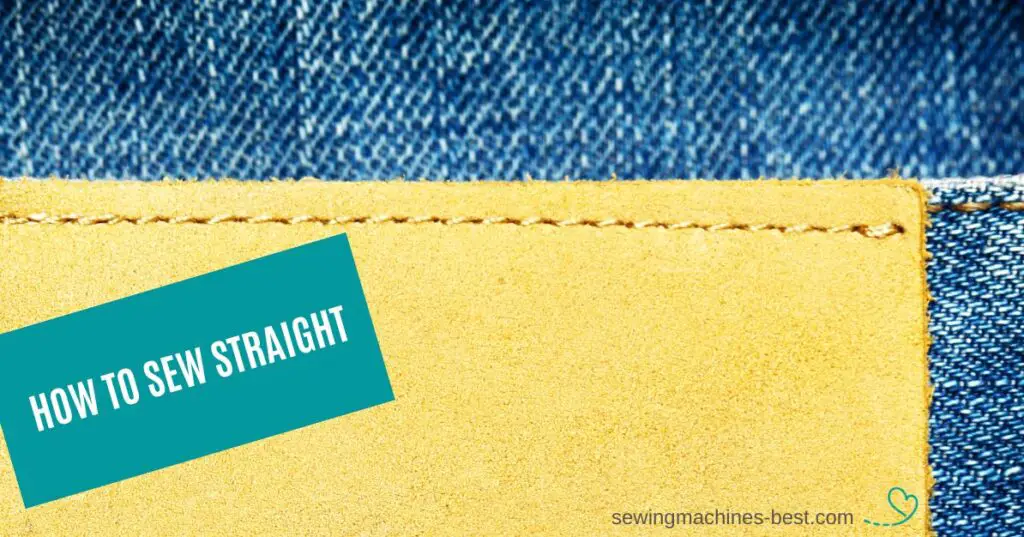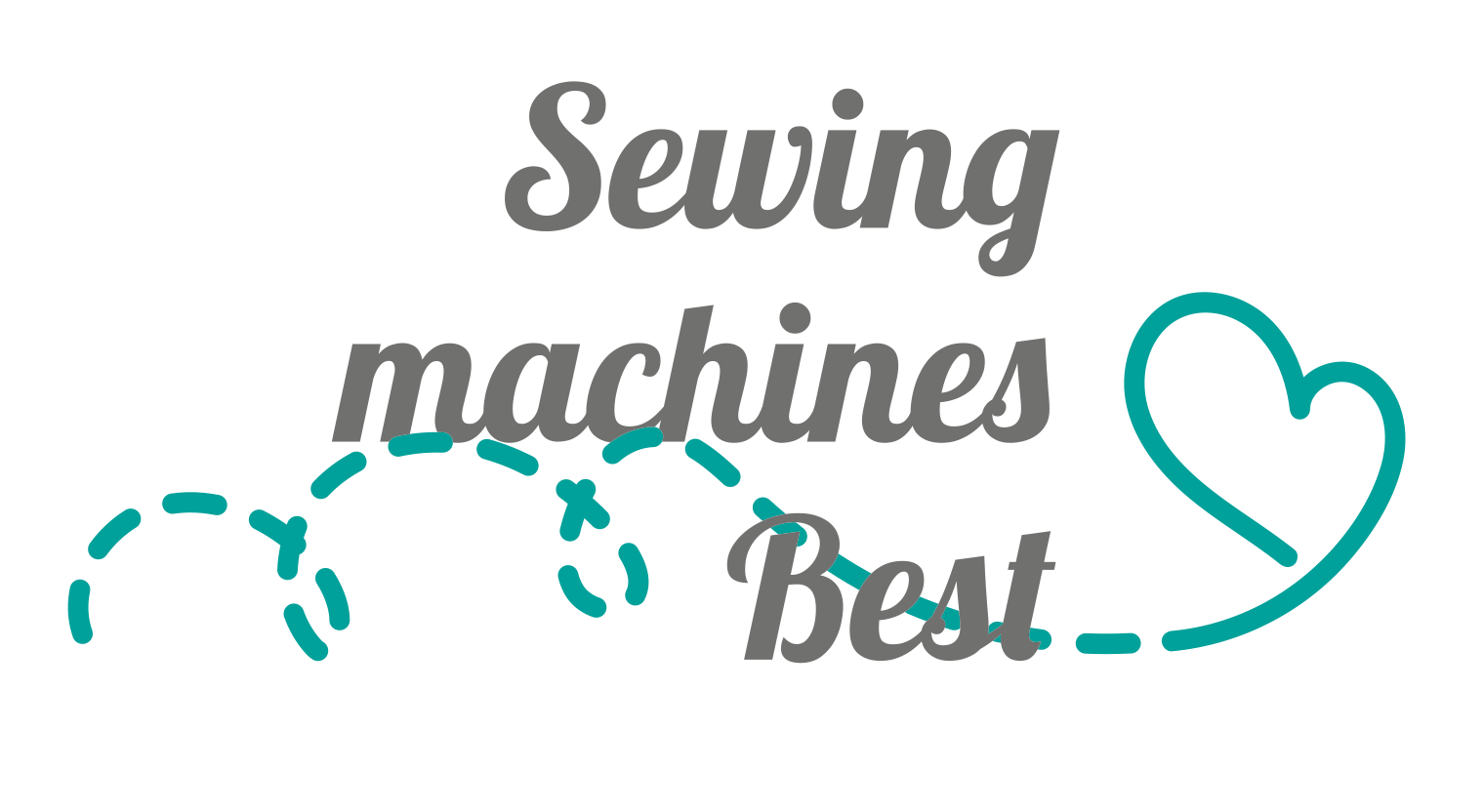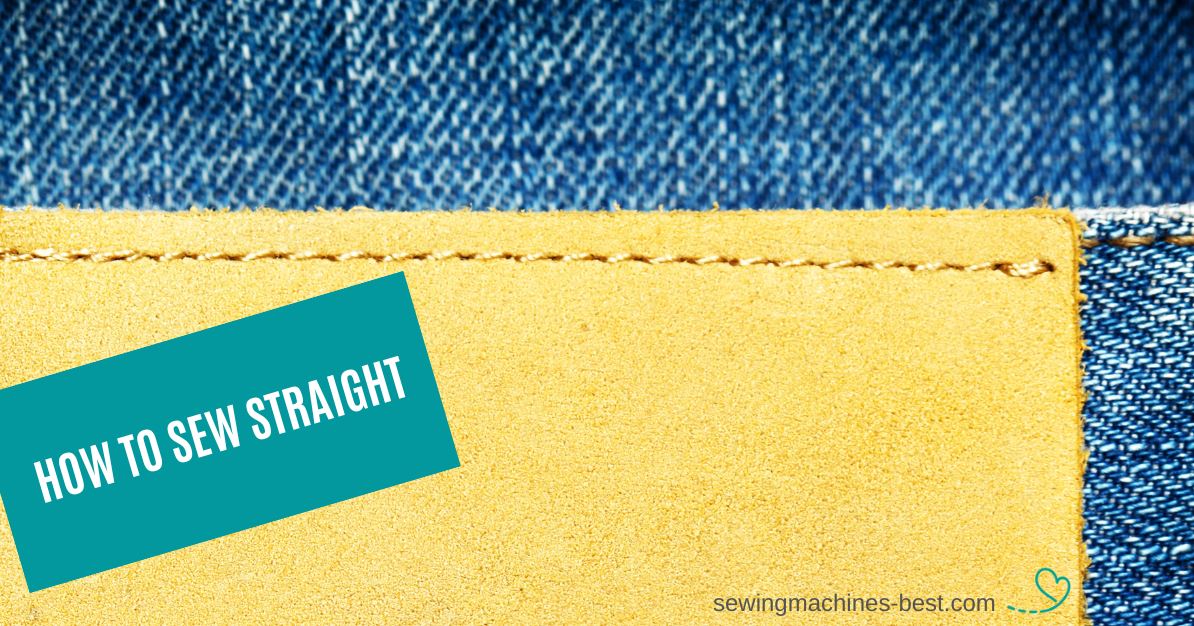Do you have a hard time getting your sewing machine to sew straight lines? It’s not just you. That is a problem that novices repeatedly encounter. This article highlights the best sewing tips and tricks on how to sew straight lines, along with everything I wish I had known when I first started learning to sew.

It’s pleasing to observe a skilled seamstress’s work because of the straight stitching lines and the flawless seams. This constantly gives the impression that it would be simple to duplicate. But immediately after you begin sewing, you realize that it’s more difficult than you originally imagined, so it’s doubtful that you would get into it right away.
Developing a new skill from scratch is frequently intimidating and challenging, specifically as an adult. In reality, sewing a perfectly straight line is among the most challenging tasks to master. For beginners, figuring it out is a significant accomplishment.
We have access to a wide range of equipment thanks to modern technology, and one ability that tools can help with is straight stitching. Furthermore, there’s a good chance that you currently have the necessary instruments; if not, they are inexpensive and easily accessible.
Contents
- 1 How can I make my sewing straight?
- 1.1 1: Get familiar with your sewing machine
- 1.2 2: Train on paper
- 1.3 3: Choose the appropriate needle
- 1.4 4: Add a grid or slider to your sewing machine
- 1.5 5: Place masking tape
- 1.6 6: Consider using a zipper foot
- 1.7 7: Attach a seam guide
- 1.8 8: Reposition the needle
- 1.9 9: Observe patience
- 1.10 10: Speed management
- 2 What to do with your hands when sewing?
- 3 What is a seam guide?
- 4 How to fasten a walking foot to a seam guide?
- 5 FAQ
- 6 Conclusion
How can I make my sewing straight?
Below are the best suggestions to sew straight lines, along with advice on how to enhance your sewing approach and equipment to make the process go more efficiently.

1: Get familiar with your sewing machine
Any sewing issue you run into can be resolved by becoming familiar with your sewing machine and its possibilities. If you purchase your sewing machine from a neighborhood store, the seller is probably going to give instructions to assist you to maximize the use of your sewing machine.

Be certain the handbook is included if you buy your sewing machine used or from a big box retailer. As you start to learn how to sew straight, go through the handbook and make reference to it frequently.
2: Train on paper
Using a piece of blank paper, I practiced sewing straight lines; this is an interesting practice for developing your sewing skills. But, as stitching on paper is susceptible to causing your needle to become dull more quickly, you may be forced to change it afterward.

You should start by sewing on the initial column from the right. Never let your eyes wander from the edge of the piece of paper while you steadily stitch. For the next column, the previous stitching line you created serves as your next guide, and so it goes. The initial column from the left will be the final one to be stitched on.
3: Choose the appropriate needle
If the fabric is not adequately penetrated by the sewing machine needle during the stitching process, the stitching may appear uneven or like a small zigzag. A key factor in enabling the sewing machine to produce lovely stitching is using the appropriate needle for the material you are stitching.

4: Add a grid or slider to your sewing machine
Guidelines are our first resort when we want to sew a straight line. Your sewing machine most likely already has guidelines on the needle plate marked on it. However, if they’re not exactly making a difference, make sure to add a grid with better guidelines to the sewing machine bed.

Use masking tape to secure the sew straight guide to the bed of your sewing machine. If your bobbin has a drop, that can be desirable. But I discovered that the Grid Glider’s lines are more readable, and it also makes the stitching surface incredibly smooth and user-friendly.
Masking tape is not necessary for the Grid Glider because it contains adhesive on the back. If it loses its tack, it is simple to detach it and wash it with water.
5: Place masking tape
A masking tape is a good option when you’re looking for a quick reference that can be modified to fit any seam allowance. You most likely already have some of it; it’s the best budget repair. Apply masking tape alone and avoid using tape, which will leave behind residue.

6: Consider using a zipper foot
Just like I said, a sewing machine foot shouldn’t be used only for the task indicated by its name. The cloth is only pushed against one side of the needle while using a zipper foot, which makes it easier to sew a straight line close to a zipper.
It helps produce piping, and it’s additionally useful for affixing piping and other bulky trims.
7: Attach a seam guide
The majority of sewing machines include this amusing L-shaped instrument. While quilting or trying to sew straight seams, it connects to the sewing machine’s foot and aids in fabric guidance. Due to its versatility and ability to be adjusted to many various widths, it is particularly useful for wide seams or straight-line quilting.

If you have an L-shaped seam guide, but your sewing machine won’t accept it, you can typically make it work by attaching it above your walking foot.
8: Reposition the needle
If your machine has a left or right needle movement feature, this recommendation will work efficiently with any sewing machine foot and other tools.

Move the needle completely to one side if, for instance, the size of the fabric you are stitching won’t allow it to cover all the feed dogs on the sewing machine. Following that, a minimum of one set of feed dogs should push your fabric.
9: Observe patience
If you start sewing too quickly, mistakes may occur very quickly, and your stitches will start to swerve everywhere you’re sewing. As you proceed, slow down and carry out slight modifications. When something starts to go wrong when sewing, stop, put the needle down, raise the presser foot, and make any necessary adjustments to the cloth to get back on track.
No one can sew flawlessly on their first attempt; it takes many attempts to get it right. Collect fabric remnants and experiment with various sewing methods. You can sew straighter when you practice before beginning a real project. There are lots of free starter patterns available that make use of fabric fragments, so you may experiment without breaking the bank.
You should be aware that there are various sorts of materials, and that some are trickier to sew compared to others.

Cotton, linen, shirting cloth, and flannel are the textiles that are the simplest to sew. These are suggested materials for novices because they do not slide or strain considerably.
On the contrary, elastic and slick fabrics, including cotton jersey, satin, silk, and rayon, are notably challenging to sew. As a result, you may want to hold off on using them for a bit.
To be more precise, practicing straight lines on worn-out shirts or tights could prove to be a bad idea if you’re a novice.
An old bed sheet that has been cut into little pieces will make a fantastic substitute. Then, using a normal pen (or any other kind will do), draw parallel lines on each piece. Implement the suggestions I provided in the section above about practicing stitching on paper.
10: Speed management
To understand how to control the speed of your machine, use it without using any thread or textile. This allows you to concentrate solely on the pace and nothing else. Regulating the pace of the machine is a key step in learning how to sew straight lines.

Most sewing machines have a dial that you can turn to alter the pace from very slow to extremely fast; the turtle and hare images are occasionally utilized to represent the dial’s two opposite ends. You might wish to try stitching barefoot to obtain control of the foot pedal if your machine is really basic and lacks this option.
Slowing down the machine will allow you to better regulate the pace and stitch line. Get anything, such as a tiny piece of wood, which fits against the foot pedal, and keep your foot from extensively pushing it to the bottom to guarantee you don’t stitch too quickly.
What to do with your hands when sewing?
What you ought to be doing with your hands specifically when sewing is another crucial factor. Placing the left hand on the fabric edge and directing it without pulling or pushing is the proper way to do it.

Neither the sewing machine nor the cloth is your opponent when you’re in that room. Not with your hands, but with the feed dogs, the material is pulled under the presser foot.
To ensure that you are serving the cloth in line with the seam allowance, you must keep an eye on the needle rather than applying pressure to the fabric.
All you need to do is spread out your index and thumb and let the fabric glide between them.
What is a seam guide?
To set the spacing between the needle plate and the fabric edges, a seam guide, a frequently used accessory, is placed on the bed of the sewing machine and it is adjustable. It is available in a variety of sizes and forms to fit a variety of machines, and it may be altered to accommodate various seam allowance widths.

Users benefit from its assistance in precisely aligning, measuring, sewing straight seams on their products, and maintaining equal seam allowances.
What is the purpose of a seam guide?
Any sewer will find a seam guide to be a handy tool. It is a piece of equipment that is attached to the sewing machine’s bed and is intended to increase stitching precision. The guide makes sure that seam allowances are applied consistently for each stitch.

How does a magnetic seam guide function?
When sewing, a magnetic seam guide is a useful instrument that enhances efficiency and precision.
It is made up of a magnetized strip that is often fixed on the throat plate of the sewing machine. It maintains a straight stitching line and equal seam allowances by keeping fabric adjacent to the fabric edge.

The magnetic seam guide should initially be fastened firmly to the throat plate, adjacent to the presser foot, at a distance corresponding to the stitch length of the seam allowances required for your sewing project.
On the throat plate of the sewing machine, there are already certain recommendations that you can utilize. Position the fabric so that it is tight against the fabric edge after attachment, and then begin stitching.
How to fasten a walking foot to a seam guide?
Locate the guide hole on the walking presser foot before attempting to connect a seam guide to it. Ensure the seam guide is adjacent to the presser foot before inserting it into the hole. Based on the shape of your walking foot, you might need to attach it using a screw or other fastening technique.

FAQ
How do you set a sewing machine to straight stitch?
Use the right thread and needle to thread your machine. Ensure that the top and bottom threads’ ends point toward the machine’s back.
Be sure you swap out your existing presser foot for one that is designed for straight stitches. This accessory’s tiny hole enables you to sew as straight as possible.
Put your fabric beneath the presser foot and start sewing. After everything is in its proper position, press the foot pedal to make your seam, etc.
You might consider this optional, however, after moving forward, use the reverse feature to go backward. You can continue using this method until the hem is finished. Stitch along the material until you reach the finish, making sure to use a straight stitch. Remove the foot pedal, switch off the sewing machine, and cut the remaining thread to complete the task.
Why won’t my sewing machine sew straight?
For a variety of reasons, your sewing machine could not be sewing perfectly straight lines. Below are a few potential reasons:
The needle is not placed correctly.
The needle is damaged or crooked.
The presser foot is not configured correctly.
The pressure is not configured properly.
What tools for sewing straight?
Sewing seams requires certain tools, including:
Sewing machine
Sewing needle
Fabric
Scissors
Thread
Seam ripper

Conclusion
Although you’ll need a lot of work, muscle memory will eventually take over.
Similar to figuring out how to ride a bike, learning how to sew straight is a process that heavily relies on muscle memory.
It’s time to implement these suggestions and begin sewing projects now that you know how to sew a straight line. Try with various threads and materials, and continue pushing even when you’re satisfied with your creation. You’ll soon be sewing straight lines in your sleep.

Hi everyone and welcome to my blog!
My name is Liz, and I started sewing when my son was born. First I repaired the holes in children’s pants, then I dared to do more challenging projects like sewing home decor and children’s clothing. Now it is my hobby where I come to rest, let my creativity run wild, and create things that please me and enhance my home.
I would love to help other sewing beginners and enthusiasts through my blog by sharing tips and tricks for this great hobby.

